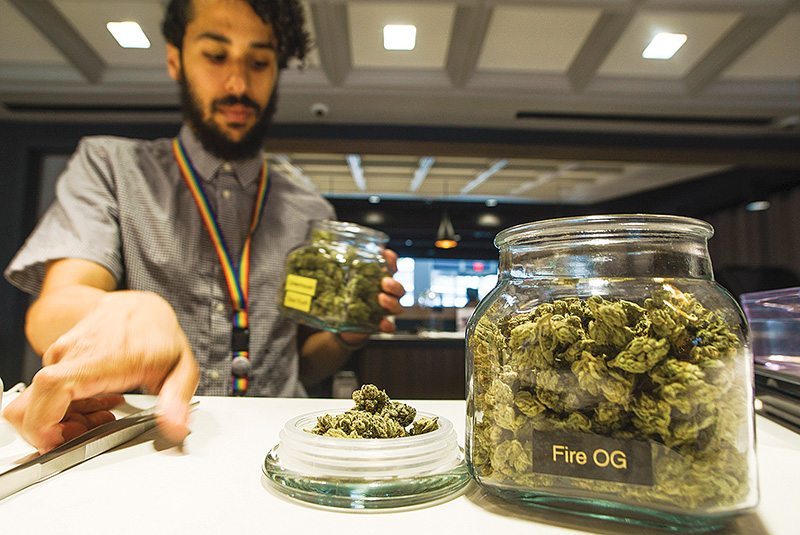The dirty little secret of the California cannabis industry is that no one’s making as much money as they thought they would.
A recent Office of the Controller’s cannabis report shows that after peaking in the second quarter of 2018, local sales went down — eventually plunging back down to pre-recreational-use levels — for the next three fiscal quarters.
Exlusive data obtained by SF Evergreen shows that after declining for three quarters, sales reached a new high in Q2 2019… only to decline again afterward.
“Since the report was published, we now have taxable sales data for the San Francisco cannabis industry up to September of 2019,” says Controller’s Office senior performance analyst Jeff Pomrenke.
During the second quarter of 2019, covering April through June of last year, Pomrenke says S.F. pot purchases “stopped the downward trend and ended with the highest amount of cannabis taxable sales recorded at $61,998,965.” That spike set a new record monthly average of $20.6 million, likely aided by last year’s 4/20 bacchanalia falling on a Saturday.
But then sales nosedived back downward again in the following three months. Net pot purchases dipped to $56 million from July through September 2019, marking a 9.1 percent decline.
That means $226 million in cannabis was sold in the last 12 months on which we have hard numbers. We won’t have the late 2019 numbers for a couple months. “There is typically a four to five month lag in the collection of this data,” Pomrenke tells us. “Q4 for 2019 will not be available until about April 2020.”
That data all comes from City Hall. We checked with several dispensaries who’ve been around since the early medical marijuana days to see if these numbers match their receipts.
“We have not seen any significant changes in our sales numbers over the past couple years,” says Kevin Reed, owner of Green Cross, which has been around since 2004. “Gross sales have always been extremely static and we’ve found it very interesting to see that our averages do not change.”
“We know this does not align with the report findings,” he adds. “It’s possible that newer cannabis dispensaries with less established clientele are seeing different numbers.”
At SPARC, which has had its SoMa location since 2010 and opened one in the Lower Haight in 2016, owner Erich Pearson says, “It’s not the growth that we expected, however we have fairly steady growth after legalization.”
Still, Pearson notes that “there’s a lot of illegal delivery companies,” and “it’s very possible that the on-demand delivery that some of these companies are doing are sucking the sales out of the city.”
Sales growth has often sputtered since legalization, but San Francisco cannabis prices have crept ever upward. We now have the most expensive marijuana of any major city in a legal state at $20 a gram on average, compared to $17 in Chicago and $15 in Las Vegas.
“The prices have gone up incredibly high since legalization,” says Sara Payan, member of the San Francisco Cannabis Oversight Committee that advises the Board of Supervisors. “The green rush is over. Cannabis isn’t the cash cow that people outside of the industry think that it is. Incorporating all these taxes is actually hindering access and lowering sales.”
The San Francisco Office of Cannabis has approved three new dispensaries in recent months, with a whopping 133 other applicants in the pipeline. “We’re looking at a massive problem,” says SPARC’s Pearson. “Combine [declining sales] with 100 permits coming on and we need a drastic reapproach.”
Even the “4/20 bump,” which fueled dispensaries and delivery services’ only positive-growth quarter of the last year-and-a-half, may not be as powerful in 2020. Thanks to the Leap Year, 4/20 will fall on a Monday, which may put a damper on the schwaggy shenanigans in Golden Gate Park.
Sagging marijuana sales are not just a San Francisco problem. Recent months have seen major layoffs at the biggest of Big Weed companies like Eaze, Weedmaps, and dispensary megachain MedMen. Anyone who’d hoped to become overnight millionaires in the California marijuana boom will have to accept some blunt new realities.

